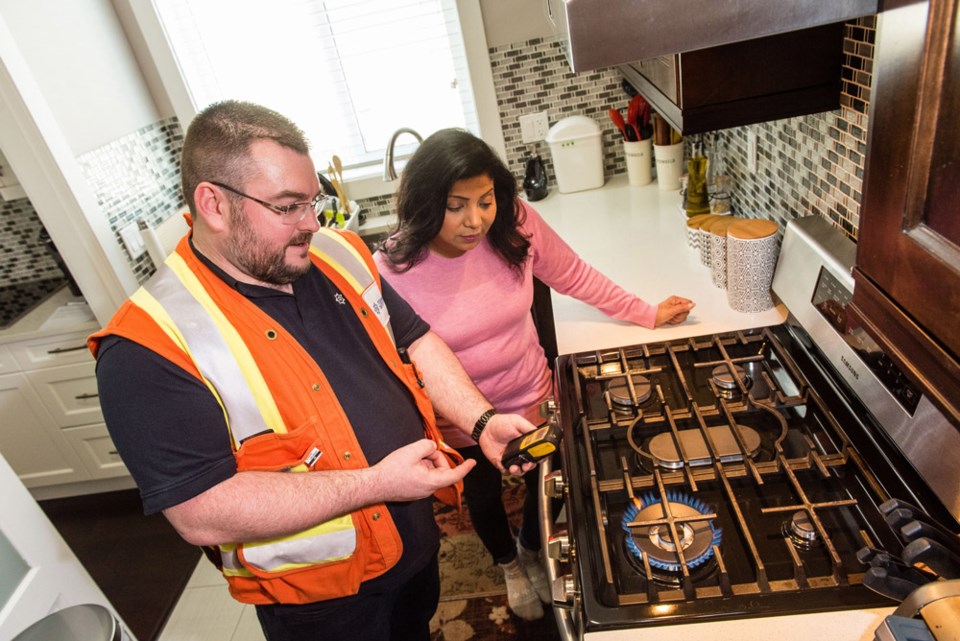Carbon monoxide (CO) symptoms can mimic the common flu, but left untreated can be deadly.
That's why, to mark Carbon Monoxide Awareness Week in British Columbia, Technical Safety BC and FortisBC are raising awareness to keep households safe from CO exposure.
"We want British Columbians to know the symptoms of CO and prevention methods," says Ryan Milligan, senior gas safety officer at Technical Safety BC.
CO is produced when fuels are burned incompletely and can be dangerous in enclosed spaces.
The colourless and odourless toxic gas interferes with the blood's ability to absorb and transport oxygen.
"It's important to take the necessary steps to reduce your risk of carbon monoxide exposure by having a licensed contractor install new natural gas appliances as well as having these appliances serviced annually," says Michelle Petrusevich, program manager, public safety at FortisBC.
The risk of carbon monoxide exposure from well-maintained natural gas appliances is extremely low. Natural gas is safe and reliable, but appliances must be kept in good condition and installed by licensed professionals.
The  has a directory of gas contractors, which can be narrowed down by areas. FortisBC also offers the  to find a licensed gas contractor in your community. To encourage annual inspections of natural gas appliances, FortisBC provides an . Customers could earn up to $150 in rebates if they have annual service completed a licensed natural gas contractor by Nov. 30, 2020.
"We had a couple of fatal incidents this summer, and one key cause between the two was that a licensed individual did not install the gas appliance. These were DIY projects that were not installed and maintained properly, and the results were tragic," Milligan says.
Low-level CO exposure symptoms can include flu-like symptoms, tiredness and fatigue.
Higher levels can lead to dizziness, chest pains, poor vision. The highest levels of exposure can have tragic results, including convulsions, coma and even death.
"At low levels, CO often presents like flu and can be mistaken for flu or food poisoning. That's important to note that the first way it presents can be compounded because people close themselves inside to try to recover and inadvertently increase their exposure," Milligan says.
It's essential to ensure working CO detectors are installed throughout your home to warn against exposure. Because CO is invisible, without smell and tasteless, the only way to tell if it's in your home is through a detector.
"Having carbon monoxide detectors installed in your home near bedrooms and on every floor will alert you and your family if there are higher levels of CO," says Michelle Petrusevich, program manager, public safety at FortisBC.
It's crucial to ensure the detector is recognized by a certification and has an audible alarm that you are familiar with.
"We recommend testing it once a month, going through the installation instructions to be familiar with the sounds. The alarm does make a different sound if the battery is dead, and it comes to the end of its life," Milligan says.
FortisBC recommends taking the following steps if your CO alarm indicates high levels in your home or if you suspect CO exposure:
- Get outside to fresh air immediately.
- Call the 24-hour FortisBC Emergency Line at 1-800-663-9911 or 911, and don't go back in the building until it's safe.
- Seek emergency medical attention for symptoms of CO exposure.
- After returning to the building, have a licensed gas contractor inspect your gas appliances.
"Safety is always the top priority at FortisBC so we respond to all suspected carbon monoxide calls by sending a technician who will inspect all natural gas appliances to determine if there is a source of carbon monoxide and, if needed, they will shut off the appliance," Petrusevich says.



